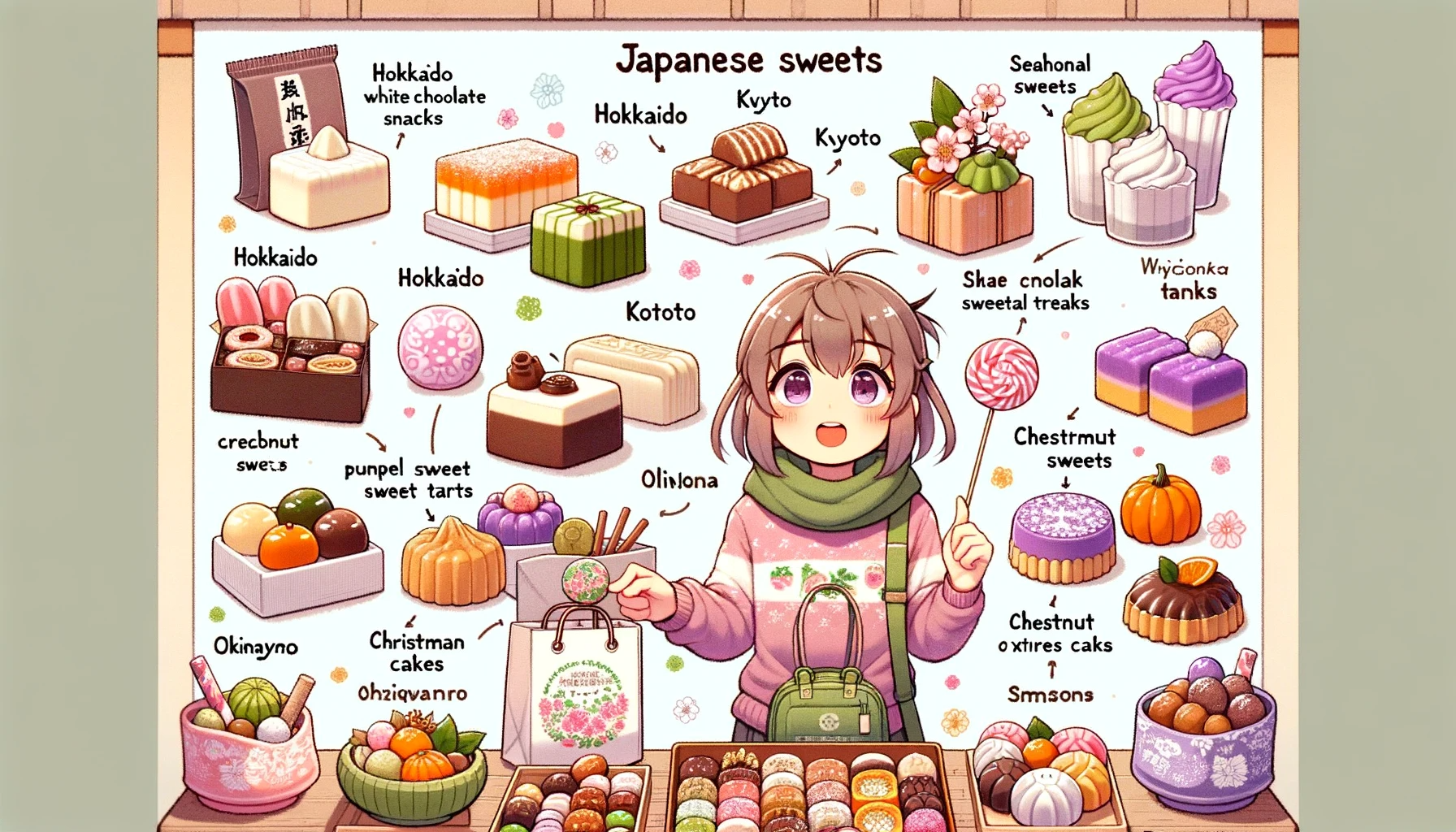- Published on
レッスン3-f_お菓子の思い_英語版
- Authors
- Name
- horomi
- Threads
- @herohoro_japan

本文に含まれる単語
別冊カルテット1(P.10~13):覚える単語と例文に対応したリスト番号
Separate Quartet 1 (P.10~13): List number corresponding to the vocabulary and example sentences to be memorized.
| リスト番号 | 単語 | よみがな | 英語訳 | 本文に含むか(◯) |
|---|---|---|---|---|
| 19 | 汚す | よごす | dirty | ◯ |
| 24 | 仲よくなる | なかよくなる | become close | ◯ |
| 32 | 普通の | ふつうの | ordinary | ◯ |
| 34 | 量 | りょう | quantity | ◯ |
| 35 | 覚える | おぼえる | memorize | ◯ |
| 36 | 金額 | きんがく | amount of money | ◯ |
| 37 | 疲れる | つかれる | get tired | ◯ |
| 38 | 息抜き | いきぬき | break | ◯ |
8個の単語を含めた文章を作成しました。
A sentence was created using eight words.
全ての単語リスト表は「読み物*説明文:3-d_楽しい春夏秋冬」を参照してください。
Please refer to "Reading Material **Description: 3-d_ Fun Four Seasons" for the table that covers all word lists.
本文
日本では、北から南まで長い国土に渡り、地域ごとに異なる気候と文化が存在します。
In Japan, there is a long stretch of land from north to south, with different climates and cultures in each region.
地域特有の文化や食材は、お菓子にも反映されており、地域ごとの特色が表れています。The unique cultures and ingredients of each region are reflected in sweets, demonstrating regional characteristics.
例えば、北海道の豊かな乳製品を使ったホワイトチョコレートスナック、京都の伝統ある抹茶を活用したスイーツ、沖縄の紅いもを使ったタルトなどがあります。For example, there are snacks made with rich dairy products from Hokkaido, sweets made with traditional Kyoto matcha, and tarts made with Okinawan sweet potatoes.
お菓子から、その地域の自然や文化の特徴を覚えることもできます。From sweets, you can also learn about the natural and cultural features of the region.
その上、季節に合わせた限定商品も売られています。In addition, there are seasonal limited-edition products.
春には桜をテーマにしたお菓子、夏には涼しげなかき氷風味のスナックやフルーツフレーバーのスイーツが登場します。In spring, there are cherry blossom-themed sweets, and in summer, cool shaved ice-flavored snacks and fruit-flavored sweets appear.
秋は栗やかぼちゃを使った商品、冬にはクリスマスケーキやみかんを使った商品が人気です。In autumn, products made with chestnuts and pumpkins are popular, and in winter, Christmas cakes and products made with tangerines are popular.
また、仲よくなるための手段としてもお菓子が使われることがあります。Sweets can also be used as a means to get along with others.
お土産という習慣です。It's a custom of souvenirs.
お土産は、旅行や出張から帰る際に家族や友人、同僚に贈る物です。Souvenirs are items that you bring back to your family, friends, and colleagues when you return from travel or business trips.
旅先での経験や思い出を共有したり、自分がその人を思いやっていることを伝えるためにお土産を渡します。You give souvenirs to share experiences and memories from your trip, and to show that you care about the person.
お土産に選ばれるお菓子は、その地域の特産品や、その地域を代表する味わいを持つものが多いです。The sweets chosen as souvenirs often have the flavor of the region's specialty products or represent the taste of the region.
手を汚さず食べれて、一口サイズで少量のお菓子にしておくと喜ばれます。People are pleased when you have a small, bite-sized sweet that you can eat without getting your hands dirty.
仕事で疲れた時、ちょっとした息抜きで食べることができるからです。This is because you can eat it as a little break when you're tired from work.
さらに、日本では訪問する際に持参する手土産という習慣もあります。Furthermore, in Japan, there is also a custom of bringing a gift, or "temiyage", when visiting someone.
訪問先の家やオフィスなどに持っていく贈り物です。It's a gift that you bring to the house or office of the person you're visiting.
訪問する礼儀として、または感謝の気持ちを表すために用いられます。It is used as a courtesy of visiting, or to express gratitude.
手土産に選ばれるお菓子は、受け取る人がその場で皆と共有しやすく、普通のお菓子より少し高価な金額のものが多いです。The sweets chosen as gifts are often a bit more expensive than regular sweets, and are easy for the recipient to share with everyone on the spot.
このように、日本のお菓子は社会的な役割やコミュニケーションの手段として重要な位置を占めています。Thus, sweets in Japan play an important role as a social tool and means of communication.
日本のお菓子文化を通じて、その地域の特色や季節の変化、人々との関係性を深く理解することができるかもしれません。Through the culture of Japanese sweets, you may be able to deeply understand the characteristics of each region, the changes of the seasons, and the relationships with people.
Podcast
この内容を音読して配信中です!
I am broadcasting this content aloud!